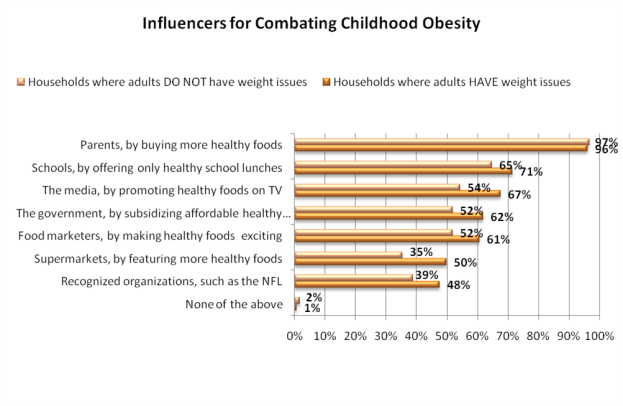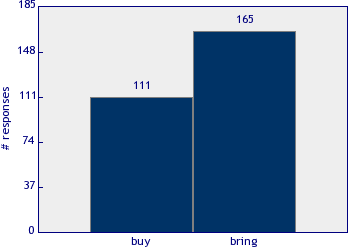Bringing vs. Buying School Lunches
By: Brendan McIrney
School
lunches are supposed to safeguard the health of the Nation’s children
which was declared by Congress in the National School Lunch Act. The
School Lunch Program makes it possible for schools to serve nutritious
and cheaper lunches to students each day. However most schools do not
have what a child wants to eat. In 2010 the first lady, Michelle Obama,
said "The
last thing we can afford to do right now is play politics with our
kids' health." She and Congress helped pass a bill that served healthier
foods including fruits, vegetables and other produce. Unfortunately
from what I witnessed in schools including mine, a lot of students do
not enjoy the new food. A few classmates of mine said it was gross and
“tastes like cardboard.” Students are required to take a fruit or
vegetable with their lunch when they buy, but studies show most kids
throw it out. Now most students will bring a lunch from home and it can
contain whatever they want in it. This can lead to child obesity and
also can hurt a schools profit from not selling more food. Although
school lunches may be easier to buy, the meals can lead to obesity and
also most people do not eat their food and are even hungry after buying
their lunch.
 School
lunches can lead to obesity in certain ways because people will not buy
the school food or bring their own unhealthy food to school. A
recent study found that children who regularly eat school lunches are
29 percent more likely to be obese than their peers who brought lunch
from home. According to New York Times, “In a typical week, elementary
school menus include chicken tenders, cheeseburgers, and ‘Pizza
Fridays,’ with sides of cheesy rotini, mozzarella sticks or French
fries. A healthy meal can be hard for students to come by in a public
school cafeteria, and is especially challenging for school systems to
provide.” Many schools are trying to change their foods to make it
healthier but it is a challenge because most school lunches are not
prepared from scratch and the schools do not use fresh fruits and
vegetables. The food is frozen, then heated, then served. ‘Readers
Digest’ states, “Though giving your child lunch money may be easier than
preparing a lunch, if you plan ahead and take the time to make lunch,
you may be helping your child battle future weight issues.”
School
lunches can lead to obesity in certain ways because people will not buy
the school food or bring their own unhealthy food to school. A
recent study found that children who regularly eat school lunches are
29 percent more likely to be obese than their peers who brought lunch
from home. According to New York Times, “In a typical week, elementary
school menus include chicken tenders, cheeseburgers, and ‘Pizza
Fridays,’ with sides of cheesy rotini, mozzarella sticks or French
fries. A healthy meal can be hard for students to come by in a public
school cafeteria, and is especially challenging for school systems to
provide.” Many schools are trying to change their foods to make it
healthier but it is a challenge because most school lunches are not
prepared from scratch and the schools do not use fresh fruits and
vegetables. The food is frozen, then heated, then served. ‘Readers
Digest’ states, “Though giving your child lunch money may be easier than
preparing a lunch, if you plan ahead and take the time to make lunch,
you may be helping your child battle future weight issues.”
 New
school lunch standards were put into effect and as a result of First
Lady Michelle Obama’s anti-obesity campaign have led to more than 1
million children leaving the lunch line. 48 out of 50 states faced
challenges obeying Mrs. Obama’s Healthy Hunger-Free Kids Act. The
National School Lunch Program saw abrupt decline in participation once
the healthy standards went into effect during the 2012-2013 school year.
A total of 1,086,000 students stopped buying school lunch due to the
new changes. The Government Accountability Office (GAO) conducted a
survey of 17 in 8 school districts and in each district students
“students expressed dislike for certain foods that were served to comply
with the new requirements, such as whole grain-rich products and
vegetables in the beans and peas and red-orange sub-groups, and this may
have affected participation.” Serving white bread was eliminated from
almost all schools because only whole grain rich items are allowed. A
lot of students are hungry after buying a school lunch because the
schools also minimized their serving portions. The school systems hope
their participation in buying lunches will increase because they figure
that the students will learn to adapt with the changes. Bringing food
from home however does fill a student because they choose how much food
they want.
New
school lunch standards were put into effect and as a result of First
Lady Michelle Obama’s anti-obesity campaign have led to more than 1
million children leaving the lunch line. 48 out of 50 states faced
challenges obeying Mrs. Obama’s Healthy Hunger-Free Kids Act. The
National School Lunch Program saw abrupt decline in participation once
the healthy standards went into effect during the 2012-2013 school year.
A total of 1,086,000 students stopped buying school lunch due to the
new changes. The Government Accountability Office (GAO) conducted a
survey of 17 in 8 school districts and in each district students
“students expressed dislike for certain foods that were served to comply
with the new requirements, such as whole grain-rich products and
vegetables in the beans and peas and red-orange sub-groups, and this may
have affected participation.” Serving white bread was eliminated from
almost all schools because only whole grain rich items are allowed. A
lot of students are hungry after buying a school lunch because the
schools also minimized their serving portions. The school systems hope
their participation in buying lunches will increase because they figure
that the students will learn to adapt with the changes. Bringing food
from home however does fill a student because they choose how much food
they want.
 Some
students also have excuses why they do not bring their own lunch. Most
students say that it is easier to buy or that they do not have time to
pack their own lunch. Others say their parents want them to buy food at
school. But a lot of students will not buy the school food because it is
not “real” food. Some students choose to buy food at school because
they do not have enough time to pack their own lunch. They might play
sports, participate in clubs, or are just lazy. However, buying a lunch
at school for most people is not pleasurable. In a poll I calculated
during school, 13 people stated that they bought school food and the
other 12 brought their own food from home. The most popular reasons for
buying food at school were because it was “easier to buy” and “not
enough time to pack my own lunch”. After interviewing some students I
discovered that most of them were not pleased with the lunches. Sabrina
Doyle was not impressed with the lunches, “The lunches taste like
cardboard. I only buy lunch because I don’t have the time to pack my own
lunch. I am still hungry afterwards too because the servings are too
small. I don’t find it worth it to buy my own lunch.” Ivan states, “I
don’t mind ordering a salad but I don’t like to order hot lunches. I am
full after eating a salad because I usually go to Munchie Mania
afterwards. I think it is worth buying lunch but it depends on the
choices.” Christina Wright was a student I interviewed for people who
bring their lunch. “I think the school lunches are gross and I like the
food at my house. I am not hungry after eating my lunch and it is worth
it bringing my own lunch to school.” Most students enjoy their own
lunches rather than the schools.
Some
students also have excuses why they do not bring their own lunch. Most
students say that it is easier to buy or that they do not have time to
pack their own lunch. Others say their parents want them to buy food at
school. But a lot of students will not buy the school food because it is
not “real” food. Some students choose to buy food at school because
they do not have enough time to pack their own lunch. They might play
sports, participate in clubs, or are just lazy. However, buying a lunch
at school for most people is not pleasurable. In a poll I calculated
during school, 13 people stated that they bought school food and the
other 12 brought their own food from home. The most popular reasons for
buying food at school were because it was “easier to buy” and “not
enough time to pack my own lunch”. After interviewing some students I
discovered that most of them were not pleased with the lunches. Sabrina
Doyle was not impressed with the lunches, “The lunches taste like
cardboard. I only buy lunch because I don’t have the time to pack my own
lunch. I am still hungry afterwards too because the servings are too
small. I don’t find it worth it to buy my own lunch.” Ivan states, “I
don’t mind ordering a salad but I don’t like to order hot lunches. I am
full after eating a salad because I usually go to Munchie Mania
afterwards. I think it is worth buying lunch but it depends on the
choices.” Christina Wright was a student I interviewed for people who
bring their lunch. “I think the school lunches are gross and I like the
food at my house. I am not hungry after eating my lunch and it is worth
it bringing my own lunch to school.” Most students enjoy their own
lunches rather than the schools.
Although
school lunches may be easier to buy, the meals can lead to obesity and
also most people do not eat their food and are even hungry after buying
their lunch. School lunches are proven to cause obesity in our nation
because the government tried to eliminate obesity by changing the school
food into “cardboard” food. Students would rather bring their own food
from home because they can choose what to bring. Most students who bring
their own food will make it unhealthy because they will put cookies and
chips in a bag instead of fruits and vegetables. The percentage of
school lunch sales decreased while the obesity of children increased.
The plan was to reduce childhood obesity but it did not stop the spread
of obesity. Students chose to eat unhealthy because even when they buy
their own lunch, they will throw away the fruits or vegetables they were
ordered to grab. The school lunch plan to reduce childhood obesity
failed.
Sources:
First Lady: Our Kids Deserve Better. May 27th, 2014
Readers Digest Editors
Environment and Human Health Inc.
USDA Food And Nutrition Service
No comments:
Post a Comment